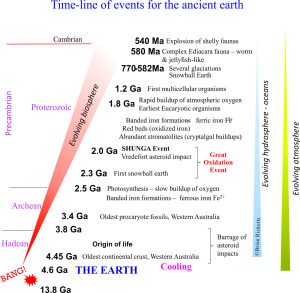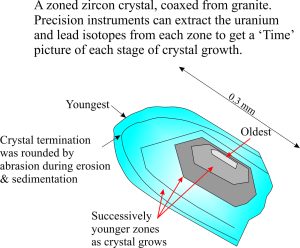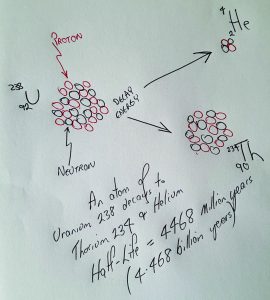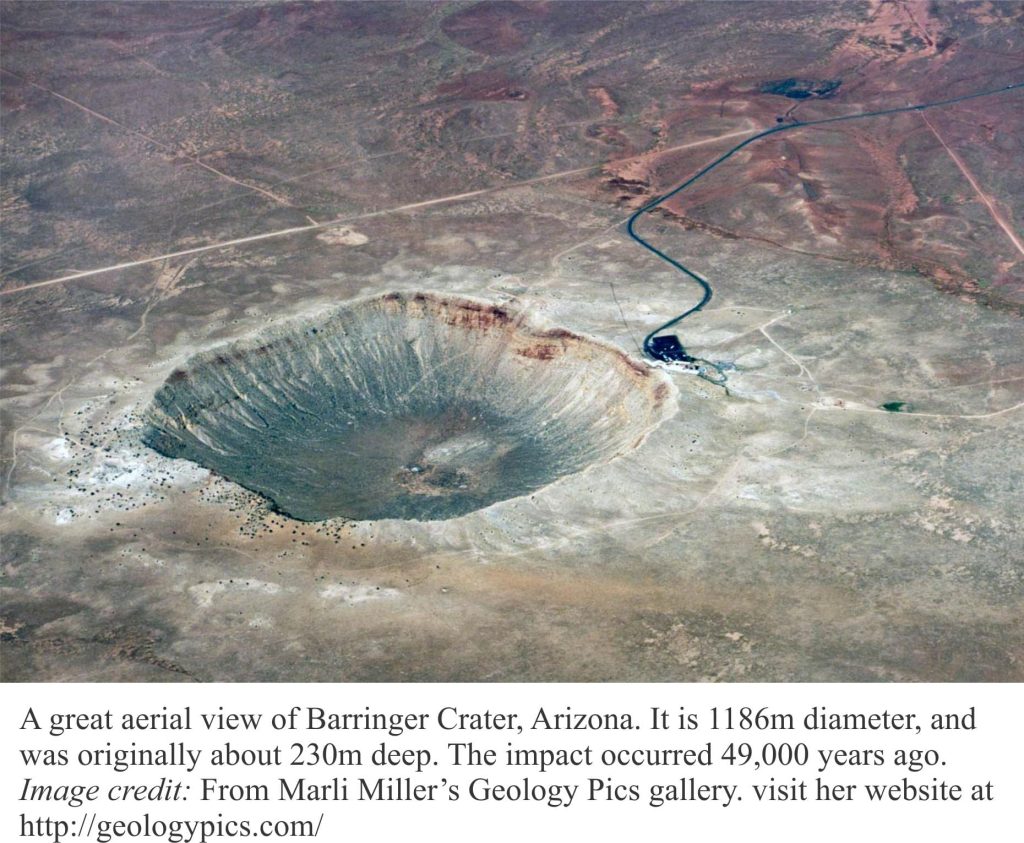How old is the Earth?
“In the beginning the Universe was created. This has made a lot of people very angry and been widely regarded as a bad move.” (Douglas Adams The Restaurant at the end of the Universe)
The question “How old is the Earth?” has provided us with some pretty interesting, often rancorous and even divisive debates over the last few hundred years. For some the debate remains unresolved. The science of dating things has progressed hugely over the last century and we can now provide, with significant confidence both relative age (A is older than B) and quantitative ages (radiometric dating) for all manner of physical objects. Age dating of earth materials is not just an interesting academic exercise; it has provided us with the tools to help evaluate energy and mineral resources, to assess the risks from natural hazards, and to study past geological events as they may relate to our future well-being.
So where do we begin? Perhaps at the beginning. Present estimates for the Big Bang and the formation of the Universe are about 13.8 billion years ago. We now know that our own Solar System began to form about 4.6 billion years ago which means there is an hiatus of 9 billion years. What happened during that great ‘interregnum’ is another story (how many other Solar Systems?). Our tale begins 4.6 billion years ago because that is closest to home. In this post we will be focusing on the bottom end of the time-line shown below.
 Archbishop Ussher, a 17th C Irish Anglican, was one of several men of religious orders to estimate the age of the earth based on biblical scripture. Most famously he calculated that Earth came into existence at 6pm, Saturday October 22, 4004BC. This date coincided with the generally accepted view that Earth was about 6000 years old. Even Johannes Kepler (1571-1630), the famous astronomer, calculated the birth at 3993 BC.
Archbishop Ussher, a 17th C Irish Anglican, was one of several men of religious orders to estimate the age of the earth based on biblical scripture. Most famously he calculated that Earth came into existence at 6pm, Saturday October 22, 4004BC. This date coincided with the generally accepted view that Earth was about 6000 years old. Even Johannes Kepler (1571-1630), the famous astronomer, calculated the birth at 3993 BC.
A bit later Comte de Buffon (1707-1788), a well known Naturalist, experimented with steel spheres of different diameters that he heated then noted the cooling rate; he extrapolated these results to an hypothesized molten globe the size of the Earth, and calculated its age at about 100,000 years.
Estimates continued during the 19th C with two characters in particular standing out; Charles Darwin, and Lord Kelvin. Darwin (1809-1882) and his famous contemporary geologist friend Charles Lyell, understood the earth to be immensely old. Darwin surmised that the evolutionary changes that took place by Natural Selection required a very long time. But he had no real way of quantifying this directly from fossils. So instead he calculated the age at 300 million years based on the amount of erosion required to form the Sussex Weald (SE England). This was quite a respectable number under the circumstances, given that it was based on his observations of natural processes at home and during his travels on the Beagle.
Enter Lord Kelvin, (aka William Thompson; 1824-1907), who possessed some disdain for Darwin’s ideas on rates of evolution, estimated an age between 100 and 20 million years, but favoured the lower age. His calculation was based on the earth’s rate of cooling. Lots of people disagreed with Kelvin but he was a Lord and held in high esteem, so questioning such a person was really not on (social niceties of the time). Kelvin’s cooling hypothesis was eventually shown to be incorrect, partly by the discovery of radioactivity by Mme Currie (one of the few women in science in the 19th C ) that subsequently led to a better understanding of how radioactive decay generates heat in the earth’s interior.
The various discoveries of radioactivity by Henry Becquerel, Mme Currie and Lord Rutherford revolutionized dating of geological time. The first published dates, using isotopes of Uranium, were by B. Boltwood in 1907, a Yale University professor. The results confirmed that we can measure deep time in 10s, 100s and even 1000s of million years.
Jumping ahead – There is a kind of unspoken competition in the geoscience community to find the oldest rocks, and at various times Greenland, Canada, South Africa and Australia have laid claim to this. The latest discovery is from Jack Hill, Western Australia, where zircons from an ancient granite were dated at almost 4.4 billion years! This tells us that earth had cooled sufficiently so that solid crust could form.
 Why use zircons? Zircon crystals are incredibly durable, chemically and physically. They are found in many igneous and metamorphic rocks, and when these rocks are eroded at the earth’s surface, the zircons are incorporated into sediment . They contain very small amounts of uranium and lead which is used to date not just a single crystal, but even very small parts of that crystal. The sketch opposite shows a ‘zoned’ crystal where the oldest part of the crystal is the central zone and outer layers are progressively younger. Modern Mass Spectrometry is able to focus an electron beam a few microns wide so that individual zones in a single, microscopic crystal can be dated.
Why use zircons? Zircon crystals are incredibly durable, chemically and physically. They are found in many igneous and metamorphic rocks, and when these rocks are eroded at the earth’s surface, the zircons are incorporated into sediment . They contain very small amounts of uranium and lead which is used to date not just a single crystal, but even very small parts of that crystal. The sketch opposite shows a ‘zoned’ crystal where the oldest part of the crystal is the central zone and outer layers are progressively younger. Modern Mass Spectrometry is able to focus an electron beam a few microns wide so that individual zones in a single, microscopic crystal can be dated.
A field trip to the moon: Earth is one part (and kind of small at that) of the solar system. So dating materials from places and objects other than earth will help constrain the age of our own 3rd rock from the Sun. The six Apollo missions that landed on the moon collected 382 Kg of rock and dust. These are expensive field excursions, the Apollo programme costing about 20 billion dollars in the late 1960s and 70s. Dating of minerals like zircon indicates the moon is at least 4.4 billion years old, similar to the oldest earth zircon dates.
Extra-terrestrial visitors: Meteorites are generally considered to have formed during the earliest stages of our solar system and therefore should correspond to the age of the earth. The majority of meteorites that have been dated have ages in the range 4.53 to 4.58 billion years. One of the best known examples is the Barringer Crater in Arizona and the meteorite fragments that have been found there are dated at 4.567 billion years.
Watch the YouTube clip of the Chelyabinsk (Russia) meteorite 2013
So, how old are we?
Archbishop Ussher 4004BC = 6019 years old
Comte de Buffon = 100,000 years old
Charles Darwin = 300 million years old
Lord Kelvin = 20 million years old
Jack Hill, Australia = 4.4 billion years old
Moon rocks = 4.4 billion years old
Barringer Meteorite = 4.567 billion years old





















2 thoughts on “Ancient earth. 2 How old is it?”
Pingback: home page
Pingback: homepage